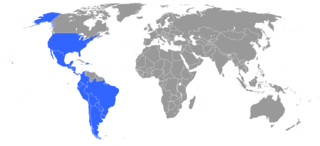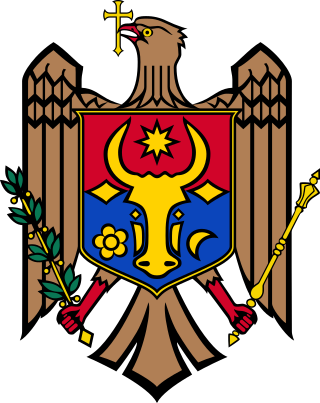
A copyright is a type of intellectual property that gives the creator of an original work, or another right holder, the exclusive and legally secured right to copy, distribute, adapt, display, and perform a creative work, usually for a limited time. The creative work may be in a literary, artistic, educational, or musical form. Copyright is intended to protect the original expression of an idea in the form of a creative work, but not the idea itself. A copyright is subject to limitations based on public interest considerations, such as the fair use doctrine in the United States.

The World Intellectual Property Organization Copyright Treaty is an international treaty on copyright law adopted by the member states of the World Intellectual Property Organization (WIPO) in 1996. It provides additional protections for copyright to respond to advances in information technology since the formation of previous copyright treaties before it. As of August 2023, the treaty has 115 contracting parties. The WCT and WIPO Performances and Phonograms Treaty, are together termed WIPO "internet treaties".

"All rights reserved" is a phrase that originated in copyright law as part of copyright notices. It indicates that the copyright holder reserves, or holds for their own use, all the rights provided by copyright law, such as distribution, performance, and creation of derivative works; that is, they have not waived any such right. Copyright law in most countries no longer requires such notices, but the phrase persists. The original understanding of the phrase as relating specifically to copyright may have been supplanted by common usage of the phrase to refer to any legal right, although it is probably understood to refer at least to copyright.

The Buenos Aires Convention is an international copyright treaty signed in Buenos Aires, Argentina, on 11 August 1910, providing mutual recognition of copyrights where the work carries a notice containing a statement of reservation of rights (Art. 3). This was commonly done with the phrase "All rights reserved" next to the copyright notice. This implementation varied as US law only required the author and year of publishing. Copyright protection under the convention is granted for the shorter of the terms of the protecting country and the source country of the work. The rather vague nature of the requirement for a statement of reservation led to the development of longer and more legalistic wordings, which have persisted despite the developments in international copyright law.
The Rome Convention for the Protection of Performers, Producers of Phonograms and Broadcasting Organisations also known as the International Convention for the Protection of Performers, Producers of Phonograms and Broadcasting Organisations and the Rome Convention, secures protection in performances for performers, in phonograms for producers of phonograms and in broadcasts for broadcasting organizations.
The copyright symbol, or copyright sign, ©, is the symbol used in copyright notices for works other than sound recordings. The use of the symbol is described by the Universal Copyright Convention. The symbol is widely recognized but, under the Berne Convention, is no longer required in most nations to assert a new copyright.
The Copyright law of the Soviet Union went through several major revisions during its existence. The first Socialist copyright law was passed in 1925. Three years later, it was superseded by a second version that remained in force for more than three decades, until it was replaced in 1961.

The Berne Convention Implementation Act of 1988 is a copyright act that came into force in the United States on March 1, 1989, making it a party to the Berne Convention for the Protection of Literary and Artistic Works.
Copyright in Russia developed originally along the same lines as in Western European countries. A first copyright statute dated back to 1828, and in 1857, a general copyright term of fifty years was instituted. The copyright law of 1911 was inspired by Western laws of the continental European tradition. One noteworthy exception in Russian copyright law was the "freedom of translation"—any work could be freely translated into another language.
The rule of the shorter term, also called the comparison of terms, is a provision in international copyright treaties. The provision allows that signatory countries can limit the duration of copyright they grant to foreign works under national treatment to no more than the copyright term granted in the country of origin of the work.
The international copyright relations of Russia were virtually non-existent for much of the Imperial era continuing into the history of the Soviet Union until the Cold War. The Russian Empire had only a few bilateral copyright treaties with other nations were concluded; these treaties moreover were weak and of short duration. The treaties from Imperial times had all expired by the time of the Russian Revolution.
Since 2008 copyright in Afghanistan has been governed by the law on the support the right of authors, composers, artists and researchers.

While no creative work is automatically protected worldwide, there are international treaties which provide protection automatically for all creative works as soon as they are fixed in a medium.Two of the most important international copyright treaties include the Berne Convention and the Universal Copyright Convention (UCC).

The Berne Convention for the Protection of Literary and Artistic Works, usually known as the Berne Convention, was an international assembly held in 1886 in the Swiss city of Bern by ten European countries with the goal of agreeing on a set of legal principles for the protection of original work. They drafted and adopted a multi-party contract containing agreements for a uniform, border-crossing system that became known under the same name. Its rules have been updated many times since then. The treaty provides authors, musicians, poets, painters, and other creators with the means to control how their works are used, by whom, and on what terms. In some jurisdictions these type of rights are referred to as copyright; on the European continent they are generally referred to as author' rights or makerright.

The Copyright Act of 1976 is a United States copyright law and remains the primary basis of copyright law in the United States, as amended by several later enacted copyright provisions. The Act spells out the basic rights of copyright holders, codified the doctrine of "fair use", and for most new copyrights adopted a unitary term based on the date of the author's death rather than the prior scheme of fixed initial and renewal terms. It became Public Law number 94-553 on October 19, 1976 and went into effect on January 1, 1978.

The Convention for the Protection of Producers of Phonograms Against Unauthorized Duplication of Their Phonograms, also known as the Geneva Phonograms Convention, is a 1971 international agreement relating to copyright protection for sound recordings.
The Corporate Affairs and Intellectual Property Office (CAIPO) is a Barbadian governmental agency in charge of various aspects of industrial property right affairs including: patents, trademarks, and industrial designs. It is a division of the Ministry of Industry & International Business. The CAIPO office is located on Belmont Road, Saint Michael, Barbados. The country ranks as one of the top countries where the greatest number of foreign patents are legally based.
The post-colonial copyright crisis of the mid-1960s is a particular phenomenon relating to the impact of the decolonisation process on former colonies in terms of literary publishing after the end of the Second World War. Previously education regimes in colonial countries had generally been under the control of the occupying power. The printing of educational texts took place in the occupying country, under copyright, most often to the specification of the relevant foreign ministry which would often produce texts with little in the way of knowledge that might lead to independent scientific or technological development.

The copyright law of Moldova regulates the copyright laws of Moldova. The first official decree related to copyrights in the country was made on 25 November 1991, shortly after its independence on 27 August of the same year. On 25 May 1991, the State Agency on the Protection of Industrial Property (AGEPI) was created, making it the second copyright agency in the country together with the State Agency for Copyright (ADA). In 1993, Moldova signed an agreement on cooperation in the protection of copyright and the related rights between it and other countries, all members of the Commonwealth of Independent States (CIS), which only came into force in 1999. By that time, Moldova had already created its official copyright law: Law No. 293-XIII, from 1994 but applied since 1995.








